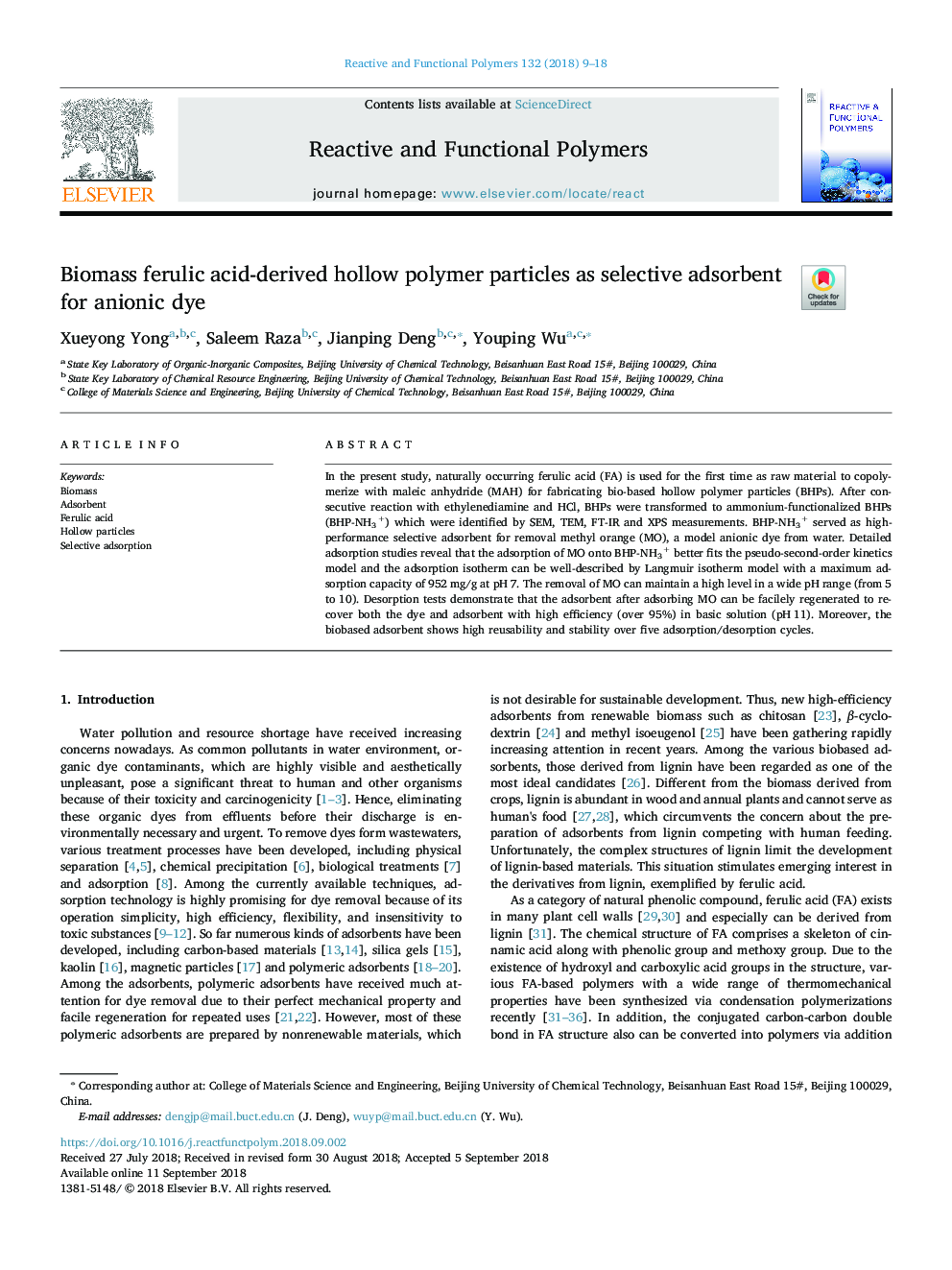| Article ID | Journal | Published Year | Pages | File Type |
|---|---|---|---|---|
| 10154950 | Reactive and Functional Polymers | 2018 | 10 Pages |
Abstract
In the present study, naturally occurring ferulic acid (FA) is used for the first time as raw material to copolymerize with maleic anhydride (MAH) for fabricating bio-based hollow polymer particles (BHPs). After consecutive reaction with ethylenediamine and HCl, BHPs were transformed to ammonium-functionalized BHPs (BHP-NH3+) which were identified by SEM, TEM, FT-IR and XPS measurements. BHP-NH3+ served as high-performance selective adsorbent for removal methyl orange (MO), a model anionic dye from water. Detailed adsorption studies reveal that the adsorption of MO onto BHP-NH3+ better fits the pseudo-second-order kinetics model and the adsorption isotherm can be well-described by Langmuir isotherm model with a maximum adsorption capacity of 952â¯mg/g at pHâ¯7. The removal of MO can maintain a high level in a wide pH range (from 5 to 10). Desorption tests demonstrate that the adsorbent after adsorbing MO can be facilely regenerated to recover both the dye and adsorbent with high efficiency (over 95%) in basic solution (pHâ¯11). Moreover, the biobased adsorbent shows high reusability and stability over five adsorption/desorption cycles.
Related Topics
Physical Sciences and Engineering
Chemistry
Organic Chemistry
Authors
Xueyong Yong, Saleem Raza, Jianping Deng, Youping Wu,
